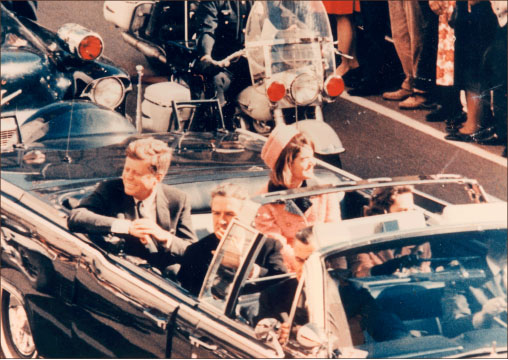Looking back on JFK

James Siddons recalls seeing John F. Kennedy the day he was assassinated

Dallas — Lee Harvey Oswald allegedly assassinated John F. Kennedy Nov. 22, 1963 as he rode through Dealey Plaza. Google Images
James Siddons, an adjunct professor in the Liberty University School of Music, came within 10 feet of history Nov. 22, 1963.
Just hours before President John F. Kennedy was assassinated in downtown Dallas, Siddons, then 15 years old, positioned himself with his father on the side of Lover’s Lane at the Dallas Love Field Airport and watched as the president’s black convertible started the short drive to the downtown area.
“The talk everywhere was that President Kennedy was coming to Dallas,” Siddons said. “In those days, Dallas was still a fairly small Midwestern city that you rarely heard of.
Whenever I heard Dallas mentioned on the TV or in the news, I got excited that somewhere in the outside world, they know we’re here. That was part of the excitement of the president coming.”
Hours later, Siddons said his 9th grade algebra teacher informed them that Kennedy had been assassinated near an area where Commerce, Main and Elm Streets intersect and pass under railroad tracks, commonly referred to as the Triple Underpass.
“It was two or three minutes of just shock,” Siddons said. “… I’m still absorbing it.”
According to Siddons, about half of his 9th grade classmates skipped classes in the morning despite the announcement that absences would not be excused. Had it not been for his father’s desire to get him back to school, Siddons’ story would have changed dramatically.
“I remember the night before and the morning too, I asked my dad if we could go downtown to the Triple Underpass because we could walk out on the tracks and watch the motorcade go right under us,” Siddons said. “… My dad said no because the traffic would be heavy, and he didn’t know if he could get me back to school in time. I was really disappointed, but had we done that, I would have been right there looking down on the whole bit.”
Nearly 50 years after an event that changed America, Siddons reflected on the impact Kennedy’s assassination had on both his life and the reputation of Dallas.
“Here’s this assassination in a town that neither (Kennedy nor alleged gunman Lee Harvey Oswald) had any deep roots in, but yet it became to characterize Dallas,” Siddons said. “And that’s what I had to live with in the coming years.”
According to Siddons, people’s perception of Dallas often colored the way they viewed him as a person until they got to know him. In 1970, he met five French boys on a train, and after learning he was from Dallas, one of them began making shooting motions with his hand, communicating his impression of people from Dallas.
Comparing the world as it was 50 years ago to now, Siddons emphasized that political and cultural turmoil are nothing new.
“There’s so much violence in the world, you would think, since the new millennium, but if you go back 50 years or 100 years, there were violent wars and assassinations then too,” Siddons said. “It’s a frightening world, but it’s not really new. It just seems to be thrust at you more directly now with the constant media.”
While some people are fascinated by conspiracy theories and possible reasons for the assassination, Siddons prefers to focus on the cultural implications of the event. According to him, the assassination only furthers his belief that the world has a need for the grace of Jesus.
